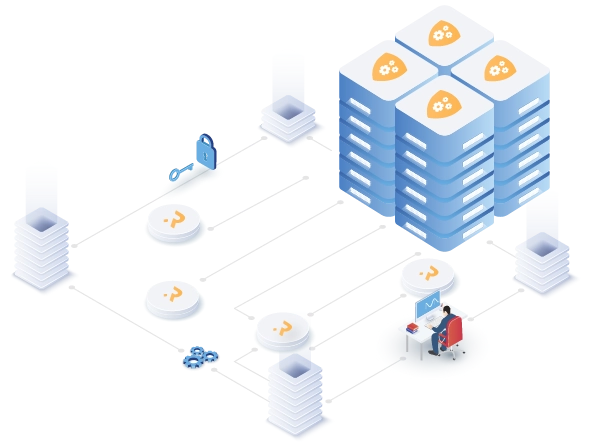In the context of modern networking, where digital landscapes are constantly evolving, the need for adaptive solutions that can seamlessly respond to fluctuating demands is more critical than ever. Adaptive Load Balancing, a dynamic approach to traffic distribution, emerges as a key strategy in optimizing network performance and ensuring resource efficiency. This article explores the concept of adaptive load balancing, its role in network optimization, and how solutions like RELIANOID Network Appliance stand out as top-tier options for Site Reliability Engineers (SREs) seeking to streamline operations.
Understanding Load Balancers: The Backbone of Efficient Traffic Distribution
At its core, a load balancer is a network device or software application that distributes incoming traffic across multiple servers, ensuring optimal utilization of resources and preventing any single server from becoming overwhelmed. Load balancers act as intermediaries between clients and servers, intelligently routing requests based on predefined algorithms and policies. By evenly distributing the workload, load balancers enhance scalability, fault tolerance, and overall performance of the network.
The Evolution of Load Balancers: From Network Load Balancers to Application Delivery Controllers
Over time, load balancers have evolved to meet the evolving needs of modern applications and networks. Traditional network load balancers focus primarily on distributing traffic at the network layer, based on factors such as IP address and port numbers. While effective for basic traffic distribution, network load balancers lack the intelligence to adapt to changing application requirements and traffic patterns.
Enter the Application Delivery Controller (ADC), a more advanced breed of load balancer designed to operate at the application layer. ADCs offer a myriad of features beyond basic load balancing, including SSL termination, content caching, traffic shaping, and application acceleration. By analyzing application-specific data and user behavior, ADCs enable more granular control over traffic routing and optimization, resulting in enhanced performance and user experience.
Adaptive Load Balancing: Dynamic Traffic Management for Dynamic Environments
Adaptive Load Balancing takes the concept of traditional load balancing a step further by introducing dynamic, context-aware traffic management capabilities. Unlike static load balancing algorithms that rely on fixed rules and thresholds, adaptive load balancers leverage real-time data and machine learning algorithms to adaptively adjust traffic distribution based on changing network conditions, application performance metrics, and user behavior.
Key features of adaptive load balancing include:
- Dynamic Scaling: Adaptive load balancers dynamically scale resources in response to fluctuating traffic demands, automatically provisioning or de-provisioning servers as needed to maintain optimal performance and resource utilization.
- Intelligent Traffic Routing: By analyzing real-time data and application-specific metrics, adaptive load balancers intelligently route traffic to the most appropriate servers based on factors such as server health, load capacity, and geographical proximity, optimizing response times and reducing latency.
- Predictive Analytics: Adaptive load balancers leverage predictive analytics and machine learning algorithms to forecast future traffic patterns and proactively adjust resource allocation to prevent performance bottlenecks and ensure seamless scalability.
RELIANOID Network Appliance: A Top Solution for SREs
In the landscape of adaptive load balancing solutions, RELIANOID Network Appliance emerges as a top-tier option for Site Reliability Engineers (SREs) seeking to streamline operations and enhance network performance. With its advanced adaptive load balancing capabilities, RELIANOID enables organizations to achieve unparalleled scalability, reliability, and efficiency in dynamic environments.
Key highlights of RELIANOID Network Appliance include:
- Adaptive Traffic Management: RELIANOID’s adaptive load balancing algorithms dynamically adjust traffic distribution based on real-time data, application performance metrics, and user behavior, ensuring optimal resource utilization and responsiveness.
- Intelligent Application Delivery: Beyond basic load balancing, RELIANOID offers a comprehensive suite of application delivery features, including SSL termination, content caching, and application acceleration, enhancing the performance and security of mission-critical applications.
- Unified Management Interface: RELIANOID provides a unified management interface that allows SREs to configure and monitor load balancing and application delivery settings from a single, intuitive dashboard, streamlining deployment and management tasks.
In conclusion, adaptive load balancing represents a paradigm shift in network optimization, enabling organizations to achieve greater agility, scalability, and resilience in dynamic environments. As SREs strive to meet the ever-evolving demands of modern applications and networks, solutions like RELIANOID Network Appliance offer a comprehensive and future-proof approach to adaptive load balancing, empowering organizations to stay ahead of the curve and deliver exceptional user experiences.




Leave a Reply